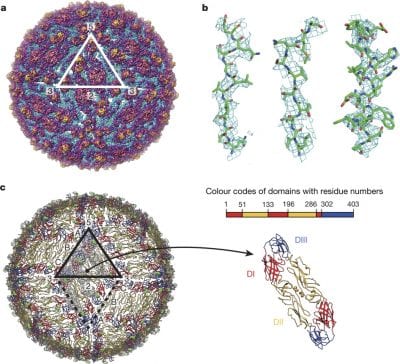Turn on the news as of late and there will undoubtedly be an article here or there about the Zika Virus. The Zika virus is a type of flavivirus (from the latin ‘flavus’ for yellow, as it was originally associated with yellow fever) that is of the family flaviviridae that includes the viruses for several diseases like West Nile, Dengue Fever, Japanese encephalitis and others.
The Zika virus is generally the cause for mild disease, but in the case of pregnant women it can cause microcephaly (birth defect where the baby’s head is smaller than expected). A 2014-2015 outbreak of Zika virus fever in French Polynesia showed an increasing number of adults showing symptoms of Guillain-Barré syndrome (a disorder in which the body’s immune system attacks part of the peripheral nervous system, starting as tingling in the peripheries and progressing towards total paralysis if untreated). A pregnant woman can pass the virus during pregnancy and also to the newborn at birth. No evidence has been found that it is transmitted via breastfeeding. Other than transmission via pregnancy, it is not only transmitted via mosquito (Aedes aegypti and Aedes albopictus), but also by sexual contact and blood transfusion. Infection by the virus does however cause the buildup of antibodies within people so that they are protected from future infections.

The same virus that was in the French Polynesia was cryogenically frozen and observed under an electron microscope after subjecting the structure to different temperatures by researchers at Duke-NUS Medical School. The cryoEM map showed the virus to be of around 3.7 Ångstroms with evidence of alpha-helices and beta-strands, with additional side chains visible. The surface of the virus contains a lipid bilayer membrane consisting of various proteins with 60 repeating units that are organized in icosahedral symmetry. This structure is very similar to other flaviviruses and so the research done in this study where the Zika virus structure is studied under various temperatures was hoping to gain a method of controlling it. The study did show that unlike the Dengue fever virus, Zika virus is detected in urine, saliva and semen, suggesting that the virus is stable enough to withstand harsh conditions, which coincided with their results after subjecting the virus to various temperatures. The study also shows all the structural points where potential interactions with chemical compounds can serve as potential exploitation for the development of drugs that can fight the virus more effectively.
[button link=”http://www.nature.com/nature/journal/vnfv/ncurrent/fig_tab/nature17994_F2.html” icon=”fa-external-link” side=”left” target=”blank” color=”285b5e” textcolor=”ffffff”]Source: Nature [/button]Last Updated on April 22, 2016.










